Featured image: Creative Commons License by Hannu Lindroos / Lehtikuva
A music industry colossus, Jimi Hendrix’s passionate playing lives with us still – decades after his tragic passing.
His intricacy, soulful songs, and inimitable style continue to inspire new guitarists to take up the cause. But throughout his career, Hendrix used a vast array of equipment to fuel his signature sounds – gear which is still highly sought after!
So, we’ve put together this deep dive into the guitars and other gear that Jimi used, from his mainstay Strats to his pedals and amps. And while a lot of this stuff is vintage and quite rare today, we’ve also included accessible modern re-releases or tribute models that capture the magic of Hendrix’s pioneering rigs.
And for those interested in the story behind the man, read on to learn about Jimi’s rise from an unknown session player to a world-conquering guitar hero.
Just to clear something up before we start – James or “Jimmy” was shortened even further to “Jimi” by manager Chas Chandler as a marketable stage name, so we’ll refer to him by both throughout.
Widely known for his love of the Fender Stratocaster (perhaps “troubled relationship” describes this better, given how many he destroyed on stage), Jimi actually used a bevy of guitars throughout his career, and the originals that survived command astonishing prices – with his iconic Woodstock Strat fetching a princely $2 million.
Before he shot to stardom, Jimi used a series of guitars throughout his early years. Possibly starting with a Supro Ozark back in the late ’50s, Jimi then made his way through several models as he moved from band to band and place to place.
This eclectic assortment of electrics included a Danelectro Bronze Standard, Ibanez Jet King 2, Epiphone Crestwood, Epiphone Wilshire, and finally, some Fenders with an early Duo-Sonic and Jazzmaster.
Incredibly, he went through all these models before he finally landed a Strat, just before his big break.
So, let’s explore these Jimi Hendrix guitars and find out what other gear he used!
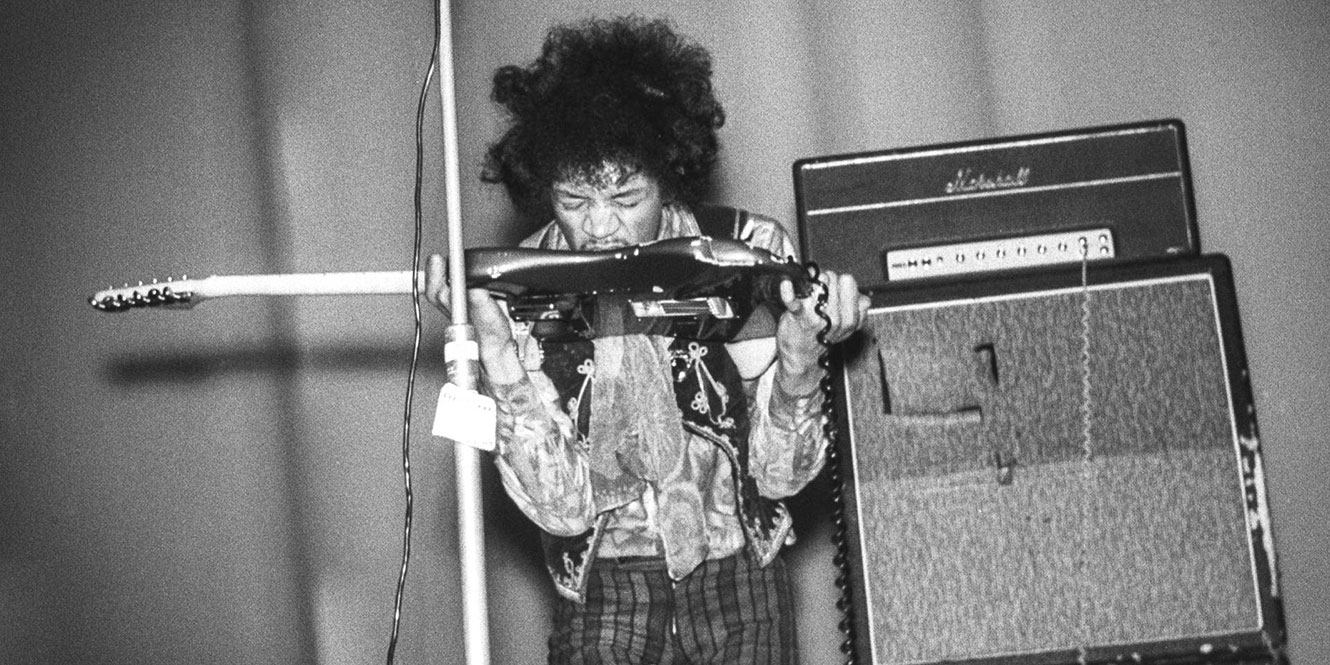
Creative Commons License by Marjut Valakivi
A summary of Jimi Hendrix’s guitars and gear
| Brand | Model | Years Used |
|---|---|---|
| Fender | 1964 Stratocaster | 1966-67 |
| Fender | 1965/66 Stratocaster | 1967 |
| Gibson | 1967 Flying V | 1967 |
| Fender | 1968 Stratocaster | 1968-69 |
| Marshall | Super 100 | 1966-70 |
| Sound City | One Hundred | 1968 |
| Vox | AC30 | 1969-70 |
| Fender | Dual Showman | 1968 |
| Dallas Arbiter | Fuzz Face | 1966-70 |
| Roger Mayer (an audio engineer) | Octavia | 1967-70 |
| Vox | V846 Wah-Wah | 1969-70 |
| Univox | Uni-Vibe | 1969-70 |
James Marshall Hendrix’s story
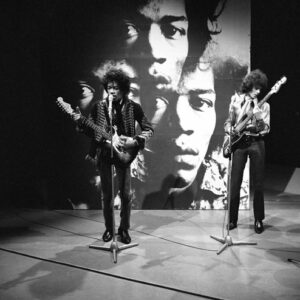
Creative Commons License by VARA
We’ve touched on the guitars that graced Jimi’s career, but what about the man himself? Hailing from the rain-blessed city of Seattle, Jimi was a guitarist from a young age.
Often found sitting at the end of his bed pretend-strumming a broom rather than sweeping the floor, his passion for the guitar was evident. After mastering the basics with some early acoustics, Jimi joined his first band, the Velvetones, and soon after was the proud owner of his first electric – the classic Supro Ozark.
Following a stint in the US Army, Hendrix went on to perform as a session guitarist under the guise “Jimmy James”, joining iconic names like Tina Turner, The Isley Brothers, and Little Richard throughout the early to mid-’60s.
But the turning point came when “Jimmy James” stepped forward into the spotlight and formed his band named “Jimmy James and the Blue Flames”. Performing in New York’s historic Greenwich Village, they caught the attention of former Animal bassist-turned-music producer, Chas Chandler.
Rise to rock god status
Chas was tipped off about an enthralling guitarist making waves at Café Wha?. Convinced by fashion model Linda Keith to head down, what Chas witnessed was enough to make his jaw drop and his drink spill over the floor.
Jimmy’s raw talent and teeth-playing were exceptional, and his rendition of “Hey Joe” and “Like a Rolling Stone” cleared any doubt from Chas’ mind – he had to get this guy to the UK; his star quality was undeniable.
After a successful meeting, Jimmy agreed to jet off to the UK to form a brand new band, The Experience.
To follow a well-worn cliché, the rest was history. This supergroup of talented individuals released a cover of “Hey Joe” which spent ten weeks in the UK singles chart, followed by the seminal Are you Experienced? album, one of the greatest rock records of all time.
Cementing his place…
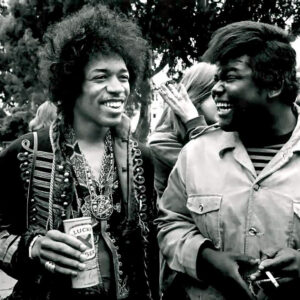
Creative Commons by Breezin704
The debut album was followed by the equally impressive Electric Ladyland, named after Hendrix’s purpose-built New York studio. Unfortunately, after a hugely successful few years, The Experience split under the pressure of touring and recording demands.
It was shortly after this breakup, in the summer of 1969, that Hendrix played his iconic Woodstock gig – where he produced the performance of a lifetime.
Backed by a formidable stack of Marshall gear, wielding his famous Strat, and clad in a beaded jacket and red bandana, Hendrix gave us a show that ranks among one of the best. It spawned the feedback-rich “The Star-Spangled Banner” in the midst of a half-hour-long medley which caused waves of reaction.
Some stated he was making a statement about the unrest in America and purposefully distorting the anthem to reflect on the Vietnam War. The artist himself though, refused those claims and simply suggested he was doing what he did best, taking a riff and running with it!
Later years
The Experience wasn’t quite done yet, however, as Jimi persuaded the drummer Mitch Mitchell to reform The Experience together with Billy Cox on bass. The group were set to record a new LP but tragically were unable to complete it before Hendrix’s passing in 1970.
After gaining prominence in 1966, Jimmy’s meteoric rise to worldwide renown in just four years ensures his legacy endures for each new generation of guitarists.
Jimi Hendrix’s guitars
A player of many riffing machines, Jimi’s favourite was undoubtedly the Stratocaster. Even so, the occasional Gibson Flying V and SG cropped up during his time, not to mention all the guitars he got through before his rise to fame.
And of course, as a leftie, most of Hendrix’s guitars were right-handed models flipped and restrung to suit his style, adding another layer to his distinctive image.
After forming The Experience, Jimi was usually seen with rosewood fretboard Strats, from roughly ’66 to ’69. He then switched to maple fretboard models, and these are perhaps the models he’s most closely associated with.
Jimi usually used 10-38s string gauges – where the G, A, and low E strings were lighter gauge than standard sets. These purposeful gauge choices complemented Jimi’s playing, giving him sustained bends, plenty of brightness, and rich twang in every note.
1. 1964 Fender Stratocaster, Olympic White “Linda”
Years used: 1966-67
- Seen in 1966-67
- Olympic White finish with rosewood fretboard
- Transition logo on the headstock
Shrouded in legend and mystique, this ’64 Strat has a disputed origin. It’s believed that this is the guitar Hendrix brought with him to the UK, but how he acquired it in the US remains disputed.
Some speculate that his manager or another purchased it on Hendrix’s behalf, ready for his UK adventure.
However, Linda Keith, a fashion model and friend of Hendrix, tells a different story. At the time, she was dating Keith Richards of the Rolling Stones and claims to have lent the guitar to Hendrix after witnessing his potential at those raw Café Wha? performances.
In fact, one account from a later girlfriend of Jimmy’s states that Linda walked straight into a hotel room where they were staying, grabbed the white Strat and departed.
Regardless of its origin, what’s certain is the mark it made on Jimmy. As one of the first Stratocasters he’d played, the model quickly became a favourite for its slender body and comfortable neck shape, and it was soon an integral part of his sound.
After his arrival in the UK, it’s highly likely that this instrument was his sole choice during early sessions and gigs in London – even after he formed The Experience. Indeed, it’s believed to have featured on the “Hey Joe” recording at London’s DeLane studios and in performances across Europe.
As to why Jimi cast this Strat aside, who knows? By 1967 he’d switched to a sunburst Strat, and the “Linda” white Strat vanished. It’s possible that Linda or Keith reclaimed it or that it was stolen somewhere along the way… that happened to a lot of Jimi’s guitars.
In any case, its loss is a significant moment in music history, and we can only hope that it’s still out there somewhere.
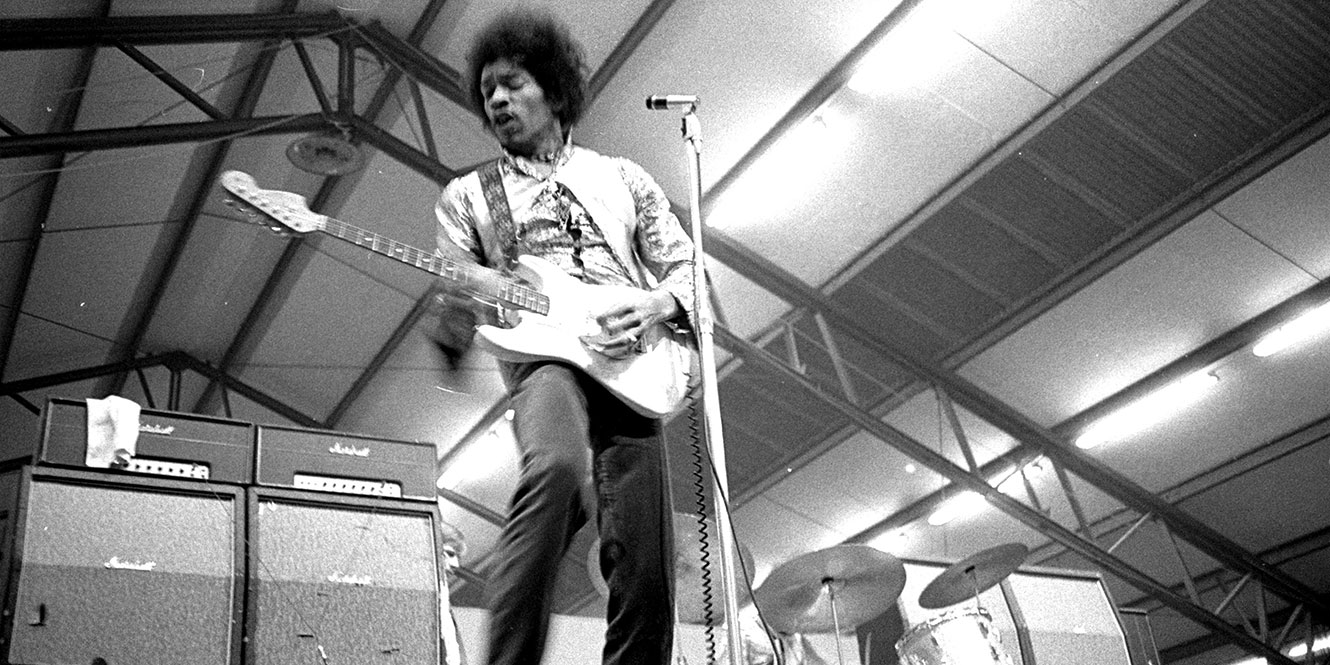
Creative Commons License by Ary Groeneveld
2. 1965/66 Fender Stratocaster, Black “Monterey”
Years used: 1967
- Solid black colour with rosewood fretboard
- Used for the majority of Hendrix’s showstopping ’67 Monterey performance
- Swapped out for Hendrix’s final song, moments before the infamous sacrificial-style guitar burning
Another instrument that’s etched in the minds of the Hendrix faithful and all-around music fans, this black beauty was one of Hendrix’s favourites.
Seen at the ’67 Monterey Pop Festival, Jimi ripped through a set that contained some of his all-time greats: “Foxy Lady”, “Hey Joe”, “The Wind Cries Mary”, and “Purple Haze”, all while wielding this stunning mid-’60s Strat.
But simply performing a seminal setlist wasn’t enough for Jimi, who wanted to leave a lasting impression on his audience. As it happened, The Who were also performing at Monterey, and Hendrix found himself in a game of one-upmanship with the British rockers.
Both acts were keen to make a dent in the American charts, and even though Hendrix was American born, he was still relatively unknown in his homeland. Each artist was desperate to open the night, seeing that as a prime opportunity to make a name for themselves.
After discussions and a stand-offish ‘jam session’, it was decided on a coin flip, and The Who won – the chance was theirs.
Now, The Who had a reputation for aggressively wrecking guitars and equipment at the end of their sets, which left Hendrix with a conundrum… how could he top that?
Well, he’d top it in the only way he knew how – with tonnes of flamboyant (and flammable) style.
And so it was that Hendrix decided to close out the show in flames, throwing his guitar to the floor after his final song and setting it alight. Kneeling beside his beloved guitar and beseeching the flames in ritualistic style, Hendrix created a moment that the world wouldn’t soon forget.
But what guitar was burned? Not the black one! Hendrix craftily swapped it out for another Strat that he’d hand-painted an artistic pattern over the body. Perhaps it was to emphasise the self-immolating spotlight moment or, just as likely, it was to protect the sleek black axe he’d used throughout the rest of the show.
Today, both guitars have appeared in various museums for public viewing, both in London and Seattle – after their purchase by a British collector. The black Strat is still playable, still charming, and still ripe with Hendrix verve… the hand-painted one, slightly less so in its charred state!
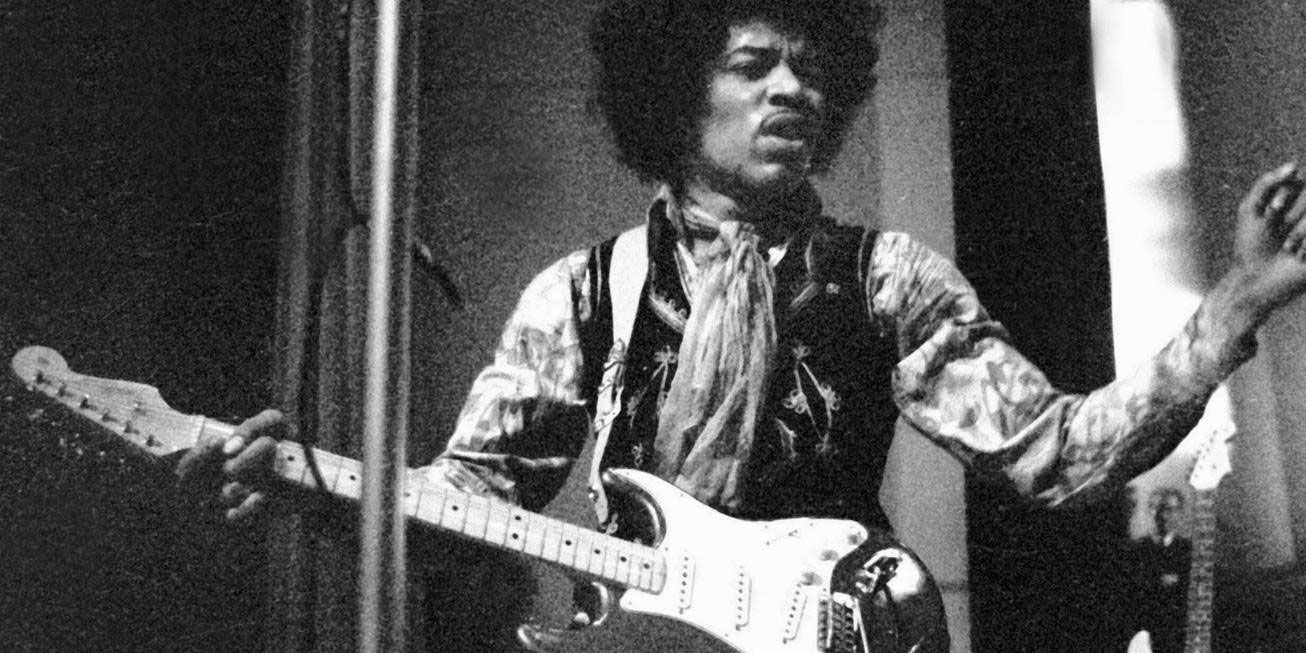
Creative Commons License by Hannu Lindroos / Lehtikuva
3. 1967 Gibson Flying V
Years used: 1967
- A departure from his beloved Strats for on-stage performing
- Hand-painted floral pattern on the body
- Its humbuckers offered a thicker, punchier sound
Straying from the Strat selection, Hendrix’s Flying V was another mainstay guitar outside of the Fender category. And unlike some of the other guitars that Jimi experimented with, this Flying V made it into his rotation of frequently-used workhorses.
It’s likely that he purchased it in America, as its first appearance was towards the start of the Monkees tour in the US. Clad in an enthralling and psychedelic floral pattern, the utterly distinctive Flying V was the perfect accompaniment to Hendrix’s trendsetting style.
In true Hendrix fashion, he renamed the Flying V to the “Gibson Flying Angel” for its heavenly looks and easy playability. As a left-handed guitarist, Jimi was restricted to options back in the sixties. Specific left-handed models did exist, but they were even rarer back then, a time before computer aided manufacture.
This meant that lefties were left with the option of playing right-handed models normally, playing them left-handed with the strings the wrong way up, or playing them left-handed with the strings flipped to suit the new dexterity.
With the Flying V, however, its symmetrical and slim body shape made it more comfortable for a leftie, letting Hendrix get to grips with it extraordinarily quickly.
Equipped with a pair of classic Gibson humbuckers for a creamy, higher output sound, Hendrix could get extra punch into his bluesy tone.
After that initial Monkees tour, the Flying V made frequent appearances at subsequent tours, cropping up at UK and European shows. Whether it featured in any of Hendrix’s studio work is up for debate, as there’s rumours it was the guitar used for “All Along The Watchtowers”.
One of the most memorable nights for the Flying V was the huge Isle of Wight festival, where Jimi was seen holding it aloft and weaving his lyrical riffs upon the neck while playing the song “Red House” – a song that’s believed to be dedicated to Linda Keith.
After ’69, the Flying V disappeared from Hendrix’s arsenal as he’d gifted it onwards. It has changed hands several times over the years and currently bears a restored version of Jimi’s floral pattern. In 2020, it was sold at auction for $2 million, making it one of the most expensive planks of wood, ever. But we suppose the auction agreed that Jimi’s creative legacy is worth the cost!
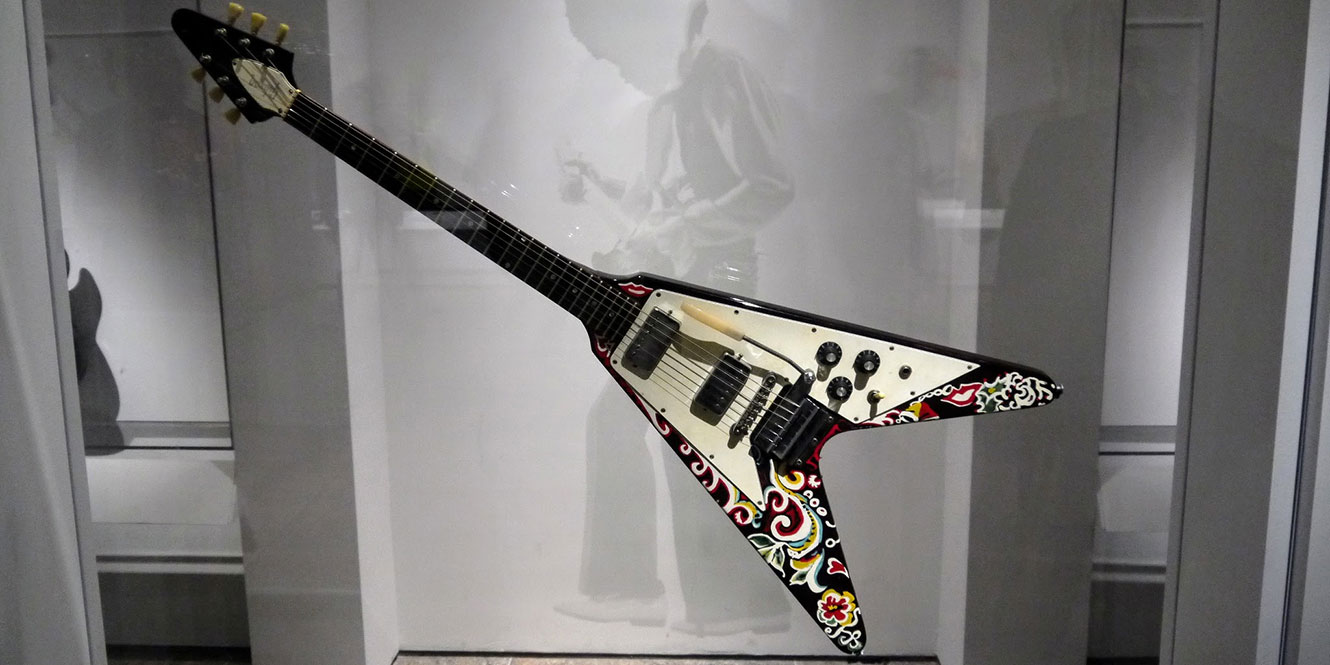
Creative Commons License by Eden, Janine and Jim
4. 1968 Fender Stratocaster, White “Woodstock”
Years used: 1968-69
- Seen from ’68 to ’69
- Notable for its large headstock shape and maple fretboard
- Etched into popular culture thanks to its Woodstock appearance
On the list of “greatest rock shows of all time”, Jimi’s Woodstock show has got to be pushing for the top spot. Up front and centre of that unforgettable day was his ’68 white Strat, with its maple fretboard and distinctive, large headstock shape.
The guitar had already made a name for itself thanks to its appearances from 1968 to 1969, but it was its display at Woodstock that etched it into popular culture forever. With Hendrix at the helm, the guitar produced era-defining sounds that are still being talked about today, and it was a true symbol of the free-spirited, revolutionary era in which it was played.
On a sun-kissed stage back in August ’69, Hendrix awed the muddy crowd with a blistering rendition of “Message to Love”, before launching into a series of hits that were all backed up by the astonishing power of a fully cranked Marshall stack.
And while all these songs were fantastic, the ’68 Strat really made its mark in the electrifying take on America’s national anthem, “The Star-Spangled Banner”.
It was a regular feature of Hendrix’s shows, but the more he played it, the more he gradually morphed the piece into an evocative political statement, intentionally or not!
So, when he injected the traditional and rigid piece with a wash of distortion and fuzz that were devoid of notes, it caused a stir amongst the public at large.
It’s been interpreted as a vehemently anti-war statement, with the visceral sonics perfectly articulating the strife and turmoil within America at the time and the ongoing Vietnam conflict.
What amps did Jimi use?
It’s clear that Jimi used plenty of different guitars throughout his life, but what about the associated gear and gizmos?
Well, there’s plenty of that too! His weapon of choice for amplifying his psychedelic signal was the vaunted Marshall Super Lead (commonly known as a Plexi) amp, paired with a couple of booming 4×12″ cabinets. It’s said that Hendrix would have a couple of these stacks at most gigs, just in case one would blow!
And while the Marshall/Hendrix combo meshes as beautifully as peanut butter and jam, Hendrix was known to use a plethora of other amps throughout his career to coax out his bluesy tunes, such as the Fender Twin Reverb, Bandmaster, and Bassman in addition to the unmistakable Vox AC30.
1. Marshall Super 100/JTM45
Years used: 1966-70
- One of Jimi’s go-to amps, the model that he’s most closely associated with
- Seen from ’66 to ’70
- Perhaps the most memorable use was pair of Superlead heads at the ’69 Woodstock
The story goes that Jimi first encountered Marshall during his initial London shows. Taking to the stage with Brian Auger’s band, Trinity, at the famous Cromwellian club, Jimi plugged into their guitarist’s Super 100 and cranked it all the way to 10.
And while that doesn’t sound quite so dramatic in written form, imagine you’re in a small London club with the full 100-watt force of Marshall’s primo amp firing at you – it was loud. But it wasn’t just the volume that gave Hendrix’s show such verve, it was the hairy feedback generated by all that reverberation which added a spikiness and eclectic element to his sound.
These early Marshalls were fully hand-wired, essentially meaning that every Marshall was unique. The classic circuitry and valve make-up created a voice that fuelled the imaginations of many musicians – not just Hendrix!
With four inputs for extra performing versatility and a set of easy EQ controls, the Super 100 was a performer’s dream. Not that it mattered to Hendrix, given his preference for whacking the settings to the max…
And so after forming The Experience and with a bit more money to his name, James Marshall Hendrix approached Jim Marshall to get his hands on the fiery amps.
As it happened, his drummer Mitch Mitchell knew Jim Marshall personally and set up the meeting.
Jim Marshall was expecting another typical artist on the scene wanting free equipment in exchange for “nothing”. And so it was to his surprise that Hendrix stated his intention to buy multiple amps at full retail price, on the condition that Jim service them anywhere in the world. Well, he couldn’t do that, but he could teach Jimi’s guitar tech some basic repair!
What followed was a lasting relationship between Hendrix and Marshall, with the Super 100 forming a core part of his setup and sound. You’ll find plenty of images that show Hendrix standing in front of a mighty Marshall stack thanks to their 100’s reputation for a full-frontal assault of gain.
2. Sound City One Hundred
Years used: 1968
- Allegedly used on the Axis recordings
- Famously used at the 1968 Miami Pop Festival
- Known for its snap, whomp, and extraordinary depth of sound
The Sound City One Hundred was another titan of tone in Hendrix’s arsenal. Heard at the Miami Pop Festival of 1968, it delivered a piercing, gain-rich shriek that Hendrix used to great effect.
He particularly enjoyed the dynamic range of the amp, which allowed everything from nuanced cleans to no-holds-barred eruptions of sound. On this searing rendition of “Foxey Lady”, you can hear this volcanic tone rip through the air during solos and screaming chords.
Made with four EL34 tubes to deliver whopping 100 watts of sonic power and complemented with ECC83 (12AX7s) in the preamp section, the 100 created a signature tone that’s still highly sought after. Backed by hand-wired circuitry for a characterful voice and two channels each with separate volume and tone controls, the Sound City One Hundred amps were designed to be versatile.
Like the Marshall that it was often paired with, the Sound City One Hundred was encased in a no-nonsense box. Sound City made theirs from sturdy steel – a material durable enough to withstand the rigours of touring and energetic performances.
Indeed, Hendrix purportedly sent for his old Sound City One Hundred and Marshall JTM45 to be delivered out to the US after his other touring amps failed, showing his favouritism for the pair and highlighting their inimitable sounds.
3. Vox AC30
Years used: 1969-70
- Heard on “All Along The Watchtower”
- An unmistakable British combo amp that’s behind countless sounds
- Though it wasn’t a touring workhorse for Jimi, its use on an iconic track is still significant
The venerable Vox. The AC30 is another classic amp that has seen many a stage and remains as popular now as it was in the halcyon days of the ’60s and ’70s. According to Hendrix’s recording engineer, he favoured the AC30 for the track “All Along The Watchtower”, constantly tinkering with the sounds it produced and experimenting with overlayed effects.
The AC30 was typically known for its smooth, chimney voice and creamy distortion, and it seemed like quite a reserved choice for a guitarist such as Hendrix who liked to push the limits with his equipment.
Throughout the song, the AC30’s warm and pronounced tone is heard on the lead guitar, which isn’t as aggressive or fuzzy when compared to songs that used Marshalls or the Sound City One Hundred. This helped create the bluesy and soulful character of the song while also serving as a great foil to the signature acoustic sections.
Outside of Hendrix, the AC30’s combo nature made it an exceptionally versatile amp for performers of the time. Hosting a pair of 12″ speakers, EL34 power tubes, and 12AX7 preamps, it boasted superb dynamics to accompany its characterful voice. And to make musicians’ lives even easier, its twin channels had separate tone controls for added flexibility.
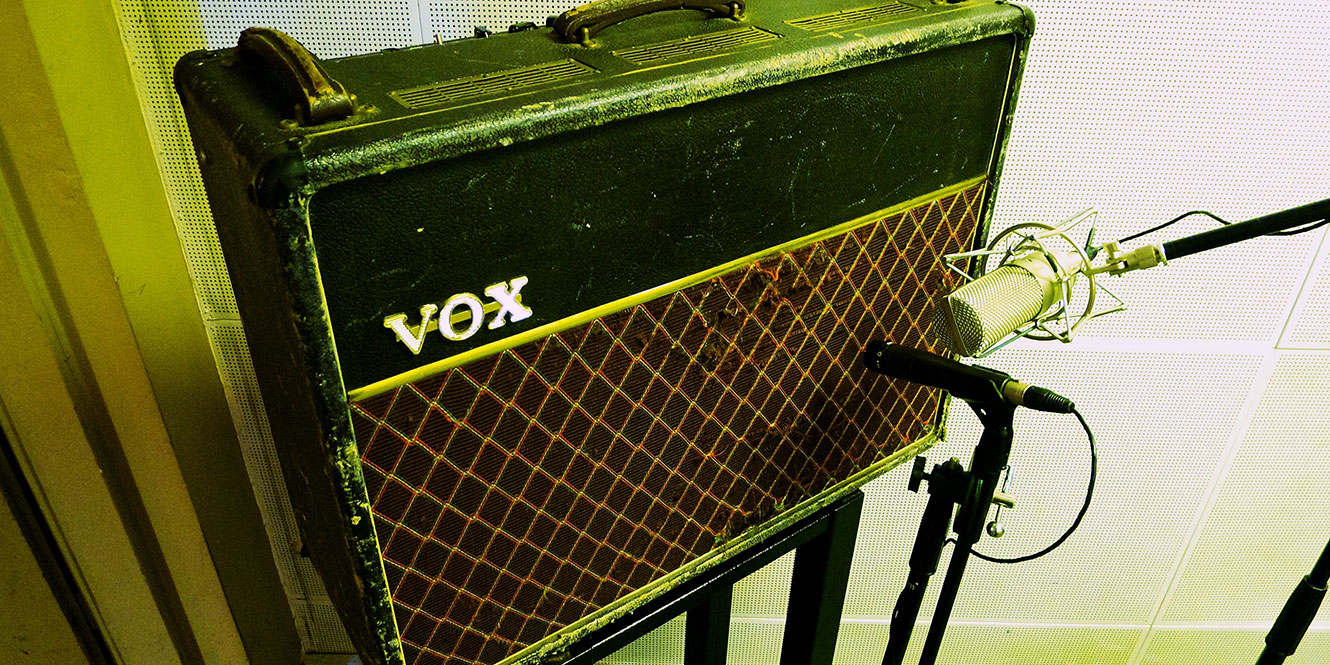
Creative Commons License by Marc Wathieu
4. Fender Dual Showman
Years used: 1968
- Possibly used on the recording of “Voodoo Chile”
- Also seen during some ’68 shows
- Designed as a stack with a warm voice and lush tones thanks to a built-in vibrato circuit
Seen for a period in 1968 and possibly making a few appearances in 1969, Jimi’s Dual Showman wasn’t as integral to his sound as the Marshall and Sound City amps, however, it appears that despite his relatively short usage of the Dual Showman, it still had a lasting musical impact.
According to the esteemed audio engineer Eddie Kramer, Hendrix used a Dual Showman through several Electric Ladyland songs… including the Hall of Fame-worthy “Voodoo Chile” and “Voodoo Child”.
“Surprisingly, the amp he used on that song was not a Marshall stack. It was actually a Fender Showman top with a huge cabinet with eight 10-inch speakers in it.” – Kramer.
This might go some way to explaining why the guitar on “Voodoo Child (Slight Return)” has such a colossal character to it, virtually drowning out the other instruments. And not only is it loud, but the explosive, larger-than-life tones have a rich treble and Fender lushness to really stand out.
The Dual Showman featured two 6L6 power tubes, six preamp tubes, and a rectifier to create its vibrant soundscape. But its most attractive feature to musicians at the time was a separate Vibrato circuit, which had speed and intensity modifiers to give notes depth and momentum.
That was combined with “Bright” and “Normal” channels to afford guitarists extra flexibility to slot into a mix or cut above, making it ideal for performers of the time.
While the Fender Dual Showman was definitely capable, Jimi’s live experience was less successful! During his ’68 tour, his Fender amps failed during a show, preventing Hendrix from finishing the set, promptly ending his live relationship with one of the biggest brands in the business.
Finishing the setup… Hendrix’s pedals
Every bit as important as his guitars and amps, the pedals Hendrix used played a vital role in his transformative sounds. Mention “Hendrix” and “effects” and the first thing people will point to is “wah” and “fuzz”, two essential ingredients for his full-throttle attitude on his biggest riffs.
There are few artists who claim to have made the Wah more loved than Jimmy did with “Voodoo Child”. The Vox V846 Wah was a key part of his setup and was joined by the Roger Mayer Octavia and Dallas Arbiter Fuzzface to complete his distinctive sounds.
But what other effects did Jimi employ to paint his vision? We’ll go over some of them here!
1. Dallas Arbiter Fuzz Face
Years used: 1966-70
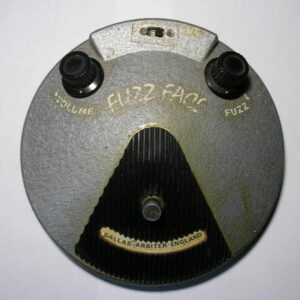
Creative Commons License by Djdaedalus
The face of the fuzz effect
- Adopted by Jimi soon after his arrival in the UK
- Shares its circuitry and history with the Vox distortion booster and Tone Bender fuzz pedal
As ubiquitously Hendrix as a Stratocaster or Marshall Super 100 stack, the Fuzz Face is heard on many Hendrix performances throughout his career and gave his tone the “hairiness” and rough edge it needed to hit with such force.
Like many other players of the time, Jimi was enamoured with the cartoonish “face” design and circular look of the pedal. However, the circuitry beneath its playful exterior wasn’t nearly as consistent in pleasing musicians.
Electronics and manufacturing processes at the time yielded pedals with extremely wide tolerances, meaning that no two Fuzz Faces sounded exactly the same. One engineer recalled that “one in twenty” might have an ideal sound, with great sustain and high-end detail.
Despite this, it was a favourite for Jimi on stage and in the studio, where it fell to his friend and tech Roger Mayer to navigate the vagaries and peculiarities of the Fuzz Face to produce the best-sounding results.
He could adjust the settings and components to get the perfect combination of tone, sustain, and distortion that suited Jimi’s playing. Today, the Fuzz Face still reigns supreme as one of the most popular effects on the market, and there are plenty of Hendrix signature models that look to capture the essence of his modified units.
2. Roger Mayer’s Octavia
Years used: 1967-70
- Used from 1967 onwards
- Designed and introduced to Jimi personally by Roger Mayer
- One of, if not the first octave effect available for guitars
A chance meeting between a young and enthusiastic audio engineer and Jimi led to an extremely fruitful musical partnership. Roger Mayer, a 21-year-old graduate, took his prototype Octavia to a Soho gig for Jimi to try, experimenting with it on a small amp backstage.
At this time in ’67, Jimi had done most of the work on “Purple Haze” and “Fire”, feeling they were almost ready for release. But upon hearing the warm, chiming voice applied by the Octavia, Jimi just had to rush straight back to the studio.
And so, he took Roger and his prototype with him to not only redo the solos for those tracks but also to use them on many other studio jams and recordings – with “Little Wing” and “Machine Gun” among them.
The spiky, layered tones that the Octavia produced created an almost ethereal cadence to Jimi’s solo sound, helping thicken the tone in a similar fashion to his fuzz circuits. Speaking of fuzz, the early Octavias did use a fuzz component placed by the octave up to drive the effect.
It remains a hugely popular and sought-after effect to this day.
3. Vox V846 Wah-Wah
Years used: 1969-70
- An unmistakable heel/toe effect that adorned many of Jimi’s greatest hits
- Released in ’67 and quickly adopted by Hendrix and many prominent rockers
- Typically used for solos and funky rhythms
Like many guitarists after its 1967 introduction, Jimi was a freak for the wah sound. He used many variations of wah throughout his time, but it’s evident that Vox wah pedals were his favourite.
Vox’s wah pedals were a sort of happy accident. A team of engineers realised that applying a volume heel/toe control to the “mid resonant boost” they were tweaking for an amplifier resulted in some engaging and sweeping sounds.
To the team, it sounded like a trumpeter using a mute to dull and release their sound. Speaking of trumpeters, Vox’s original intention was to market it to jazz and woodwind players, having no idea just how influential this effect would be to rockers and funkers alike.
And in Hendrix’s case, if we didn’t have Vox’s iconic Wah, we wouldn’t have the utterly awesome intro to “Voodoo Child”, which ranks as one of the best riffs to have ever been riffed.
In addition to the wavey “wah wah” effect produced by alternating the heel/toe action, Hendrix would often leave the pedal fully depressed at the “toe” end to extract a boosted treble sound that worked well on fills and solos.
4. Univox Uni-Vibe
Years used: 1969-70
- A rich and lush effect originally designed to emulate the sounds of rotating Leslie speakers
- First created in 1968
- Known for creating a rich, syrupy chorus and vibrato sound that imbued a “wooshing” sense to the guitar tone
Brought into the spotlight by Jimi, this fascinating pedal added a lot to his later sounds. Introduced in 1968 by Japanese company Honey/Shin-Ei, it allowed players to create swishing, whooshing, and enveloping tones with a huge range of modulation.
Jimi is thought to have acquired it around ’69 and notably used it throughout the live recording of Band of Gypsys, where its washing, lush chorus can be heard morphing Jimi’s take on “The Star-Spangled Banner” into an even more psychedelic anthem.
Like a few other effects Jimi used, the Uni-Vibe wasn’t originally intended for guitar. Its bulky and heavy frame was designed for desktop keyboard use, but by adding an expression pedal, the Uni-Vibe became an easy-to-control effect where Jimi could dial in the intensity without having to attend to the box itself.
And where Jimi paved the way, others followed. Dave Gilmour of Pink Floyd used the Uni-Vibe to great effect on the track “Breathe”, creating a spacey and eerie atmosphere.
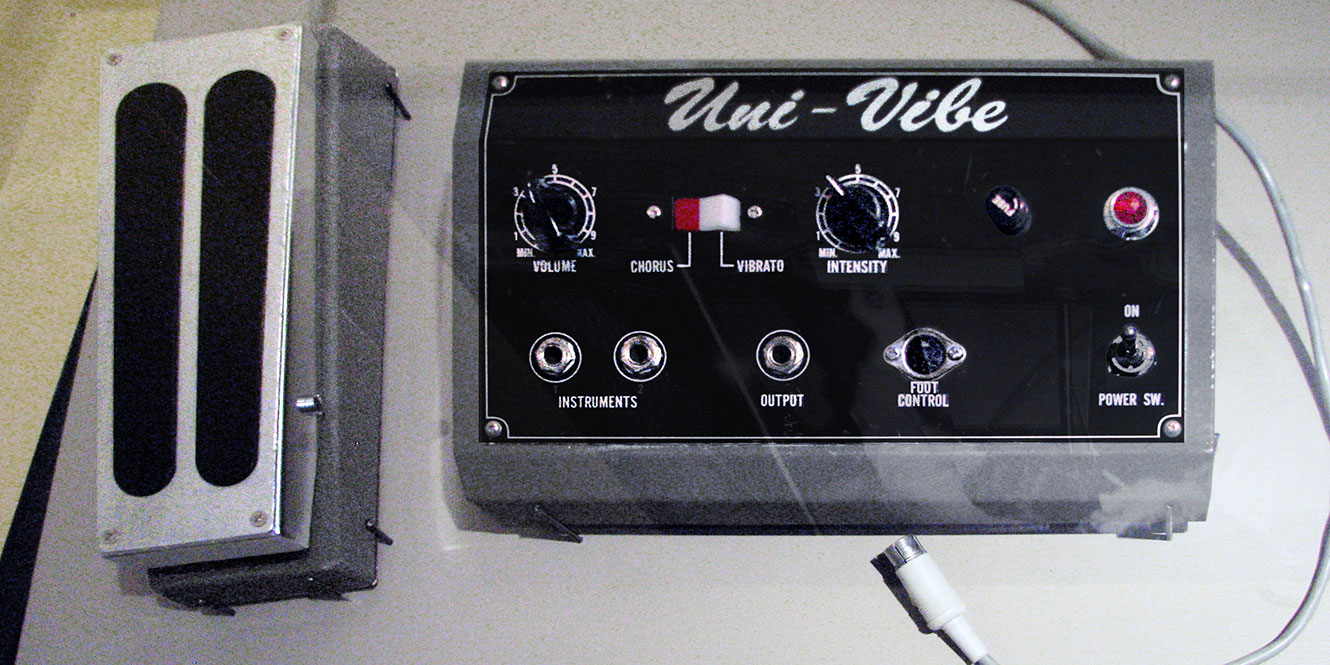
Creative Commons License by Shin-ei Uni-Vibe (1968), Jimi Hendrix, EMP Museum
Want to sound like Hendrix?
As one of the guitar’s foremost idols, Hendrix’s tone is a holy grail amongst players old and new. Whether you’re searching for a clean and soulful voice like the melody of “Little Wing” or a fuzzed-out, overdriven sound like the riff of “Purple Haze”, there are a few key elements you’ll need to consider if you want to sound like Hendrix.
First off, his vintage gear. We’ve covered a lot of equipment in this deep dive article, and acquiring original examples of the stuff mentioned would be prohibitively expensive for almost anyone. Luckily, there’s a lot of modern equipment that’s designed to give you the same sound and feel as Hendrix’s records.
And secondly, his expressive playing style! Remember, this is a man who’d play with his teeth and his tongue while on stage! Adopting Jimi’s dynamics, thumb-over chords, and fluid vibrato will take you a long way to sounding like the visionary himself.
Guitars
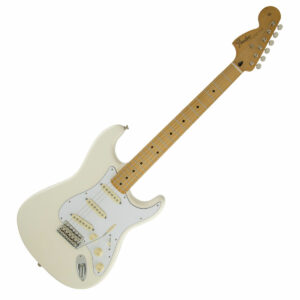 While Jimmy used a series of axes throughout his time, it’s the Strat that was his faithful companion.
While Jimmy used a series of axes throughout his time, it’s the Strat that was his faithful companion.
Fender’s Jimi Hendrix signature Strat gives right-handed players that cool reverse-headstock image, as well as an overall design that closely matches guitars of the era. And more importantly, a trio of ’65 American Vintage pickups give you a sound that closely matches the hand-wound pickups of the era.
However, if you’re a player on a budget or just starting out, then Fender’s Squier Sonic series is a great low-cost option to nab Jimi’s white Strat style. It lacks the expressive tremolo to keep things simple, but the reduced body weight and slim neck profile are great for developing Hendrix-style licks.
Amps
Like his guitars, there’s one amp that’s most closely associated with Jimi: the Marshall Plexi. While those rare vintage models are like gold dust today, Marshall’s SV20H is an incredibly close recreation.
And while you may scoff at the 20-watt rating, you can trust that it packs enough volume oomph to melt the faces of anyone within 50 meters.
At the other end of the scale, the MG30GFX combo gives you classic Marshall style and sounds at a much more accessible price point. As it’s a combo you don’t need to worry about any other equipment and can get all the crunch and thump of Jimi’s best songs in one place.
Pedals
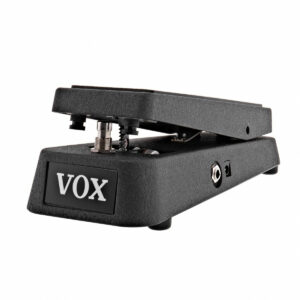 Fortunately for enthusiasts, recreating Hendrix’s effects setup is fairly simple. His iconic Fuzz Face is still around in a signature line – now made by Dunlop.
Fortunately for enthusiasts, recreating Hendrix’s effects setup is fairly simple. His iconic Fuzz Face is still around in a signature line – now made by Dunlop.
It’s an easy way to inject the frothy and gritty growl into your tone and the iconic “face” design into your pedalboard.
Secondly, the Vox V845 Wah presents the classic sweep that infused many of Hendrix’s lead lines. Simple to operate, you can heel/toe it for tunes like the “Voodoo Child” intro or leave it fully engaged when soloing up at the high end for screaming notes.
As for the octave effect, the newly launched Lizard Queen produces a sound that approaches the Octavia, while adding a modern twist with extra fuzz. Or for a more traditional approach, EHX’s Octavix recreates the ’60s tones with accuracy.
And finally, the rare and venerable Uni-Vibe is still around today… just in a different form. Dunlop own the Uni-Vibe trademark and produce a much more compact stompbox with the same functionality, so you can get those lush vintage tones at a fraction of the size and cost!
FAQs
What kind of guitar did Jimi Hendrix use?
Jimi Hendrix was most well-known for using Fender Stratocaster guitars. While he did use a wide variety of other guitars in his time, the majority of his performances from ’66 onwards were with various Stratocasters.
What was Hendrix’s favourite guitar?
Jimi Hendrix’s favourite guitar was his 1968 Fender Stratocaster, dubbed the “Black Beauty”. He used it extensively throughout ’69 and ’70 and was seen at many performances, like at The Royal Albert Hall and Madison Square Gardens. He was pictured holding it the day before his death.
How much did Jimi Hendrix guitar sell for at auction?
Jimi Hendrix’s guitars have sold for a wide range of prices at auction, with the highest reportedly stretching to $2 million! This was Jimi’s white Stratocaster seen at the ’69 Woodstock festival. It was purchased by Microsoft co-founder Paul Allen, who donated it to his EMP museum in Seattle.
Final thoughts
We hope you’ve enjoyed this foray into Jimi Hendrix guitars and other gear, and that it’s inspired you to try out new ideas or combinations of gear to find your own sound.
Feel free to ask us any questions in the comments section below, and check out our similar deep dive into John Lennon and his love for the Epiphone Casino.

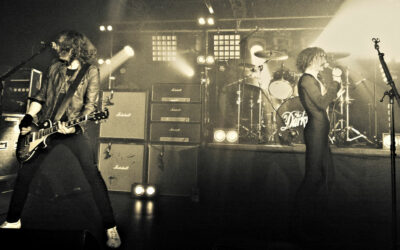
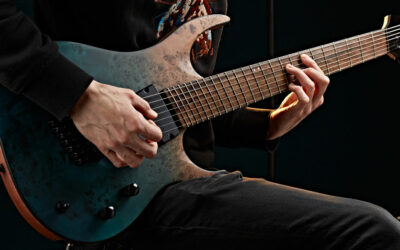
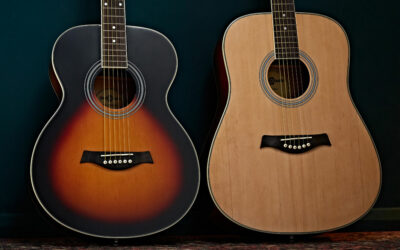

0 Comments